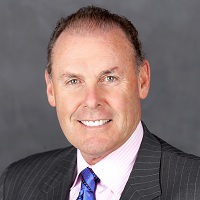There is No Place Like Home: Mature Foreign Asset Protection Trusts Are Coming Home
The 10-year time limit is expiring for a raft of foreign asset trusts, and those who hold them could benefit in several ways now by redomiciling them to the United States.


Do you have a foreign asset protection trust (FAPT)? Has it been established for more than 10 years? Are you interested in ways you can save on the costs of maintaining your FAPT? You may now bring your trust home to a qualifying state and still maintain the firewall protections your FAPT provided.
In recent years many FAPTs that have reached their 10-year anniversary are being migrated back to the United States. Why is the 10-year period so critical? Under a federal law pertaining to bankruptcy proceedings, the U.S. bankruptcy trustee is allowed to challenge transfers to a domestic asset protection trust or other similar devices for up to 10 years from the date assets were transferred to the trust. Once the 10-year term has expired, the trust is no longer at risk of being challenged as a fraudulent transfer in a bankruptcy proceeding.
The long statutory period to challenge transfers to asset protection trusts caused many people to establish these trusts in an overseas country where Federal Bankruptcy Code Section 548 would not apply.
From just $107.88 $24.99 for Kiplinger Personal Finance
Become a smarter, better informed investor. Subscribe from just $107.88 $24.99, plus get up to 4 Special Issues

Sign up for Kiplinger’s Free Newsletters
Profit and prosper with the best of expert advice on investing, taxes, retirement, personal finance and more - straight to your e-mail.
Profit and prosper with the best of expert advice - straight to your e-mail.
The benefits of bringing a trust home
Once the statute of limitations under Section 548 has expired, a creditor is no longer able to pursue the assets held in the trust. This is great news, considering the FAPT can now return home! The many benefits of converting the FAPT to a domestic trust include:
- lower administration fees
- more flexibility in banking and investment custodians
- convenience
- less IRS tax compliance, i.e., less costs to maintain the trust
A real-life story
Here is a client example: Dr. Veronica G. developed a specific medical procedure to fix an ongoing condition and for several years she had successfully helped more than 75 patients overcome their medical issue. One day while watching the news, Dr. G. saw a commercial in which a law firm advertised that it would sue doctors who injured patients who had the procedure performed and who may have sustained injuries.
Dr. G. began to realize that although this procedure was successful, there could be some larger liability than her malpractice policy would cover. This prompted her to consult with a lawyer who specialized in comprehensive estate planning with asset protection and resulted in her establishing foreign asset protection trusts.
Dr. G.’s trust is now more than 10 years old, and after meeting with her attorney, she decided to redomicile her trust to Nevada, a state that year after year ranks in the top five of asset protection trust states. This strategy will maintain the protections of the trust while reducing Dr. G’s overall costs to maintain the trust. She won’t be required to file the IRS tax compliance forms required for trusts established overseas, and her choice of banks and brokerage firms will increase significantly, because many U.S. banks and brokerage firms will not open accountants under a FAPT.
Overall, the key concept is that if your FAPT is now more than 10 years old, you may now bring it back to the U.S. and still maintain the protections of the trust.
Profit and prosper with the best of Kiplinger's advice on investing, taxes, retirement, personal finance and much more. Delivered daily. Enter your email in the box and click Sign Me Up.

Jeffrey M. Verdon, Esq. is the lead asset protection and tax partner at the national full-service law firm of Falcon Rappaport & Berkman. With more than 30 years of experience in designing and implementing integrated estate planning and asset protection structures, Mr. Verdon serves affluent families and successful business owners in solving their most complex and vexing estate tax, income tax, and asset protection goals and objectives. Over the past four years, he has contributed 25 articles to the Kiplinger Building Wealth online platform.
-
 Stocks Struggle for Gains to Start 2026: Stock Market Today
Stocks Struggle for Gains to Start 2026: Stock Market TodayIt's not quite the end of the world as we know it, but Warren Buffett is no longer the CEO of Berkshire Hathaway.
-
 Tip: Ways to Track Your Credit Card Rewards
Tip: Ways to Track Your Credit Card RewardsHere are the best strategies and apps to help you stay current with your credit card rewards.
-
 How New Investors Can Pick Their Perfect Portfolio, According to a Pro
How New Investors Can Pick Their Perfect Portfolio, According to a ProSee what Cullen Roche has to say about finding your perfect portfolio as a new investor and his two-word answer on where he thinks the stock market is headed in 2026.
-
 High-Net-Worth Retirees: Don't Overlook These Benefits of Social Security
High-Net-Worth Retirees: Don't Overlook These Benefits of Social SecurityWealthy retirees often overlook Social Security. But timed properly, it can drive tax efficiency, keep Medicare costs in check and strengthen your legacy.
-
 Do You Have an Insurance Coverage Gap for Your Valuables? You May Be Surprised to Learn You Do
Do You Have an Insurance Coverage Gap for Your Valuables? You May Be Surprised to Learn You DoStandard homeowners insurance usually has strict limits on high-value items, so you should formally "schedule" these valuable possessions with your insurer.
-
 8 Practical Ways to Declutter Your Life in 2026: A Retirement 'Non-Resolution' Checklist
8 Practical Ways to Declutter Your Life in 2026: A Retirement 'Non-Resolution' ChecklistHere's how to stop wasting your energy on things that don't enhance your new chapter and focus on the things that do.
-
 To Retire Rich, Stop Chasing Huge Returns and Do This Instead, Courtesy of a Financial Planner
To Retire Rich, Stop Chasing Huge Returns and Do This Instead, Courtesy of a Financial PlannerSaving a large percentage of your income, minimizing taxes and keeping spending in check can offer a more realistic path to retiring rich.
-
 New Year, New Retirement Rules: Here's How You Can Keep Up as the Landscape Changes
New Year, New Retirement Rules: Here's How You Can Keep Up as the Landscape ChangesFor a successful modern retirement, prepare for a longer life, manage high health care costs and prioritize your social life and purpose.
-
 7 Creative Ways to Spend Less and Save More In Retirement, Courtesy of a Financial Pro
7 Creative Ways to Spend Less and Save More In Retirement, Courtesy of a Financial ProWorried you won't have enough money later in life? Try redesigning your vision of retirement, and you may find your savings go further than you thought.
-
 I'm an Annuities Pro: This Is How You Can Cover the Income Gap While Your Social Security Benefits Grow
I'm an Annuities Pro: This Is How You Can Cover the Income Gap While Your Social Security Benefits GrowTaking Social Security later results in higher future income, but that can create an income gap. Annuities can boost income until you file for benefits.
-
 I'm a Financial Pro: You Really Can Make New Year's Money Resolutions That Stick (and Just Smile as Quitter's Day Goes By)
I'm a Financial Pro: You Really Can Make New Year's Money Resolutions That Stick (and Just Smile as Quitter's Day Goes By)The secret to keeping your New Year's financial resolutions? Just make your savings and retirement contributions 100% automatic.